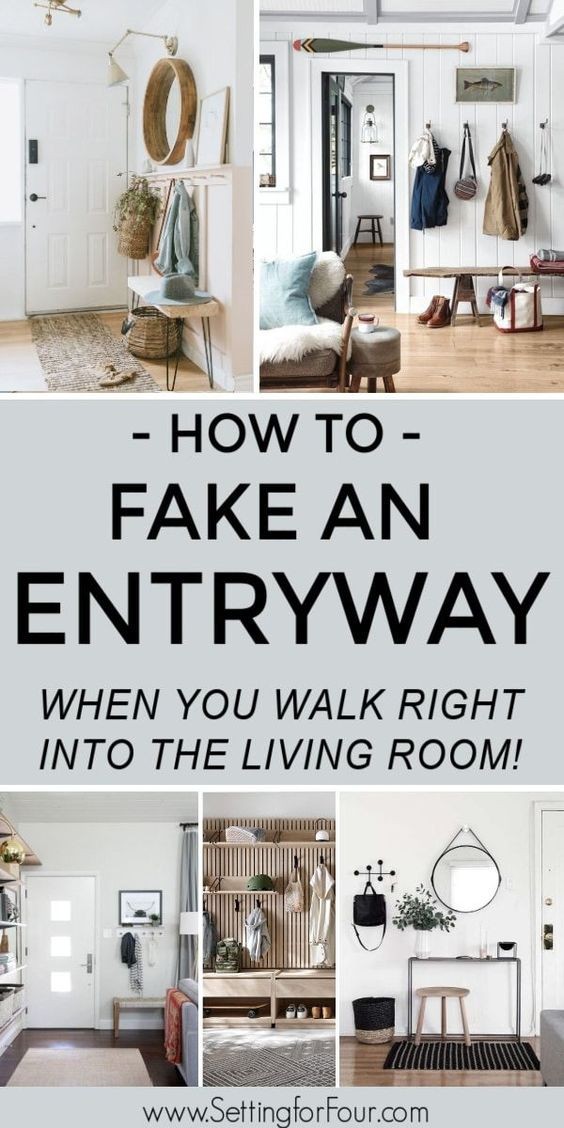How to Create the Illusion of an Entryway and Seamlessly Flow into Your Living Room
Creating a functional and stylish entryway can be a challenge, especially in homes where space is limited or the layout doesn’t naturally accommodate a traditional entry area. However, with some creative design strategies, you can create the illusion of an entryway while seamlessly flowing into your living room. This approach not only enhances the functionality of your space but also adds a touch of elegance and organization. Here’s how to achieve this design feat.
1. Use a Console Table or Narrow Storage Piece
A console table or a narrow storage unit can serve as a visual divider between the entryway and the living room. Placing this piece near the entrance creates a defined area for keys, mail, and other essentials while maintaining a smooth transition into the living room.
Choose the Right Size: Opt for a slim console table that doesn’t obstruct the flow of the room but still provides enough surface area for functional use.
Decorate Thoughtfully: Add decorative elements like a stylish lamp, a mirror, or a small vase to make the console table a focal point and enhance the entryway illusion.
2. Incorporate a Stylish Rug
A well-chosen rug can define the entryway area and visually separate it from the living room. Select a rug that complements your decor and fits the scale of the space.
Define the Space: Place the rug in the entry area to create a distinct zone. Choose a rug with a bold pattern or color to draw attention and set the tone for the space.
Coordinate with the Living Room: Ensure the rug’s design complements the living room decor to maintain a cohesive flow.
3. Utilize Open Shelving or Hooks
Open shelving or wall-mounted hooks near the entry can mimic the functionality of an entryway, providing space for coats, bags, and other items. This practical solution helps keep the area organized while creating a transitional space.
Install Shelving: Place shelves at a convenient height for storing or displaying items like keys, mail, or decorative pieces.
Add Hooks: Install hooks for hanging coats, bags, or hats. Choose stylish options that blend with your decor.
4. Incorporate a Partition or Divider
A decorative partition or room divider can create a visual boundary between the entry area and the living room, enhancing the illusion of a separate entryway.
Choose a Design: Opt for a partition with an interesting design or pattern to add visual interest. Consider options like folding screens, open shelves, or sliding panels.
Keep It Light: Use a partition that doesn’t block the flow of light or disrupt the open feel of the space.
5. Add a Statement Mirror
A statement mirror placed near the entrance can serve multiple purposes: it creates a focal point, adds visual interest, and makes the space feel larger and more open.
Select a Style: Choose a mirror with a decorative frame or unique shape that complements the overall decor.
Position Strategically: Hang the mirror where it can reflect light and contribute to the illusion of a defined entry area.
6. Use Lighting to Define the Space
Lighting plays a crucial role in defining and enhancing different areas within a room. Install lighting fixtures that create a distinct ambiance for the entryway while seamlessly transitioning into the living room.
Install a Pendant Light or Chandelier: Hang a stylish pendant light or chandelier near the entry to draw attention and create a welcoming atmosphere.
Add Sconces or Lamps: Use wall sconces or table lamps on the console or side tables to provide additional illumination and enhance the entryway’s visual appeal.
7. Create a Gallery Wall
A gallery wall featuring artwork, photographs, or decorative items can act as a backdrop for the entryway area, adding personality and making the transition to the living room feel more deliberate.
Curate Your Gallery: Arrange a collection of art or photos in a cohesive layout that complements both the entryway and living room decor.
Maintain Flow: Ensure the gallery wall design flows naturally into the living room to maintain a seamless transition.
8. Incorporate Color and Texture
Using color and texture can help differentiate the entryway from the living room while ensuring a smooth flow between the two areas.
Paint or Wallpaper: Apply a different color or wallpaper pattern on the entryway wall to create visual separation without disrupting the overall design.
Use Textures: Incorporate different textures through rugs, textiles, or wall treatments to subtly define the entryway area.
Conclusion
Creating the illusion of an entryway while seamlessly flowing into your living room is all about strategic design and thoughtful decor choices. By using elements like console tables, rugs, shelving, partitions, mirrors, lighting, gallery walls, and color, you can effectively define the entry area and enhance the overall flow of your space. These design techniques will help you achieve a functional and stylish entryway that complements your living room and adds a touch of elegance to your home.






